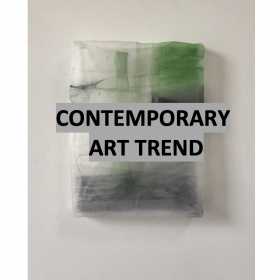Désolé, cet article est seulement disponible en Anglais Américain. Pour le confort de l’utilisateur, le contenu est affiché ci-dessous dans une autre langue. Vous pouvez cliquer le lien pour changer de langue active.
Tumultuous global relations, the consolidation of the technological revolution and an ever-louder call for populist ideologies. Whilst artists and institutions are being urged to reflect on and contribute to the current socio-political zeitgeist, the question remains: how is the contemporary art world responding?
#MeToo movement, as well as debates in the US regarding abortions and women’s rights, have resulted in magnified attention towards the inequalities of our modern society. The confusion of Brexit, the global immigration crisis continue to place such issues surrounding the representation and treatment of women and minorities at the forefront of international consciousness.
Gender Equality
In recent decades the art world has made steps towards rectifying inequalities within their structures. Indeed, we have seen a rise in the number of women in leadership positions in the art institution. Additionally, some of the most heralded and record-breaking art exhibitions of last year featured female artists such as Hilma af Klint at the Guggenheim, Adrian Piper at MoMA and Anni Albers at the Tate Modern. Auction houses are seeing record sales for work by women non-white artists.

Demarcke Trui – Illumination II – Silk tissue, starch, acrylic paint – 45 cm (h) x 30 cm (w) x 4 cm (d)
Technology: social media, blockchain and artificial intelligence
The globalization of the art world and exponential growth in the number of global internet users has led to a rapid increase of social media’s influence on the circulation of art and the tastes of art buyers – especially millennials and Generation Z. Hiscox’s 2019 Online Art Trade Report described the continuing growth of online art sales: with 40% of art buyers under the age of 35 bought from online platforms, up from 36% last year. The report also suggests that this increase in online purchases is seen most strongly at the lower end of the art market, resulting in an expansion of the market in diversity and size. Indeed, the total market value is estimated to reach over 6.4 billion by 2020. Additionally, online social media platforms such as Instagram have become an increasingly crucial way of promoting and raising awareness of art and artists.
![]()
Woestenbergh Tom – Reconstructing Paradise 3 : Fear the hunters – Paper tape, X-film collage and epoxy on dibond – 120 cm (H) x 90 cm (W)
Environmental Concerns
With environmental issues at the forefront of everyone’s minds, artists and institutions are continuing to engage with this global crisis.

Frederic Fourdinier – Spruces V – Lithography – 30 (H) cm x 48 (W) cm
In Closing…
It seems that the contemporary art scene is currently undergoing a top-down shifting of dynamics. Globalisation and the increased access to technology permit more individuals from diverse backgrounds, including those committed to political and social change, as well as artists and collectors to express their views, tastes, needs and perspectives and to have them heard. This is forcing the market to reflect on how best to meet the needs of the rapidly changing global consciousness and is a trend that is expected to persist indefinitely as the world rebalances, with the art institution asked to continue to adapt accordingly. Considering the interdependent relationship between museums, galleries, and collectors, a small change made by one individual can have a major effect on the entire direction of the rapidly-changing and diversifying art market.
Do you want to discover works of contemporary art? Discover our online gallery. Advice. Choice. Delivery worldwide.

